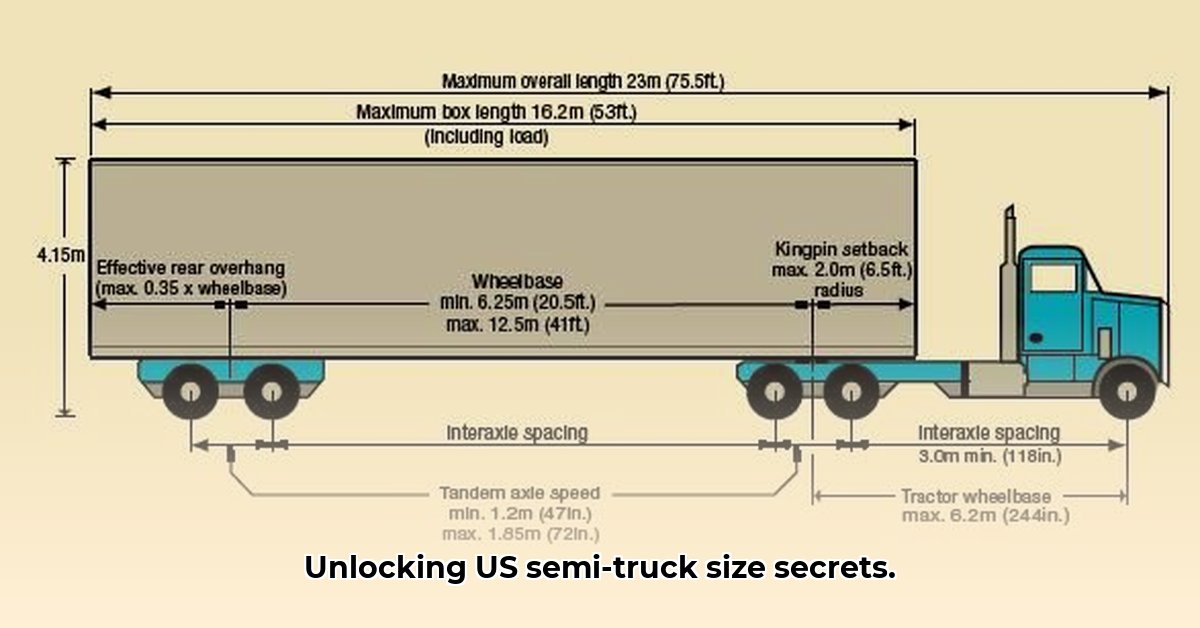
Semi-Tractor Dimensions: Navigating US Regulations and Operational Realities
Understanding your semi-tractor's dimensions is vital for legal compliance and efficient operations. This guide clarifies US regulations and provides practical advice for fleet managers and drivers. For detailed tractor specifications, check out this helpful resource: tractor specs.
Federal Regulations: The Big Picture
Federal regulations establish maximum, not minimum, dimensions for semi-trucks. The Gross Vehicle Weight Rating (GVWR) – the total weight of the loaded truck – is capped at 80,000 pounds. Maximum width generally is 8.5 feet (though mirrors may extend slightly beyond this). The maximum height is typically 13.5 feet. However, remember that states often impose additional restrictions.
State-Specific Regulations: Length Variations
While federal rules govern weight and width, individual states determine maximum trailer lengths. This creates significant variability. For example, Texas and Oklahoma permit longer trailers (up to 59 feet) than the typical 53-foot limit in many other states. Always check the specific regulations of each state you operate in.
| State | Maximum Trailer Length (ft) | Notes |
|---|---|---|
| Most States | 53 | This is a common length limit. Always verify with your state's DMV. |
| Texas | 59 | Exception to standard length regulations. |
| Oklahoma | 59 | Exception to standard length regulations. |
| Others | Varies | Consult the relevant state's DMV website for precise details. |
Trailer Types and Dimensions: A Detailed Overview
Different trailer types have varying dimensions:
- Dry Van: Typically 53 feet long.
- Pup Trailer: Shorter, around 28 feet.
- Flatbed: Length varies depending on load.
- Tanker: Length and dimensions specific to the transported material.
- Intermodal Containers: Dimensions are standardized, but overall length varies.
Understanding these differences is crucial for proper load planning and compliance. Are you maximizing your cargo space while staying within legal limits?
Cab Configurations and Dimensions: Day Cab vs. Sleeper Cab
The type of cab significantly impacts the overall vehicle length. A shorter day cab is suited for shorter trips. Longer sleeper cabs provide overnight accommodations but increase the vehicle's overall length. This affects maneuverability and route planning. Have you considered the implications of cab size for your specific routes and loads?
Operational Considerations: Efficiency and Maneuverability
Vehicle dimensions directly affect operational efficiency. Longer vehicles often consume more fuel. Larger trucks are less maneuverable, especially in urban settings, negatively impacting delivery times. Careful route planning is essential to optimize efficiency and minimize delays.
Compliance Strategies: Technology and Training
Ensuring compliance involves both technology and driver training. GPS systems with dimensional tracking capabilities provide real-time monitoring, helping prevent violations. Comprehensive driver training programs that emphasize dimensional regulations and safe driving practices are vital for minimizing risks and ensuring compliance. Is your fleet utilizing available technologies to enhance this aspect?
Safety Considerations: Safe Driving Practices
Operating oversized vehicles requires extra caution. Larger blind spots demand enhanced awareness and defensive driving techniques. Driver training should emphasize these aspects, ensuring safe operation within legal limits.
Staying Informed: Keeping Up with Regulatory Changes
Regulations evolve. Regularly check the FMCSA website (https://www.fmcsa.dot.gov/) and your state's DMV website for updates. Staying abreast of changes is critical for maintaining compliance and avoiding penalties.
Resources: Helpful Links
- Federal Motor Carrier Safety Administration (FMCSA): https://www.fmcsa.dot.gov/
- [State Department of Motor Vehicles (DMV) websites - link to a directory of state DMV websites] (replace bracketed information with a consolidated link or a comprehensive list of links)